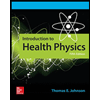
Concept explainers
Introduction: The nervous system controls and coordinates all the activities of the animals. It is classified into two major types, namely central nervous system (CNS) and peripheral nervous system (PNS). The central nervous system includes the brain and spinal cord. The PNS includes cranial nerves and their branches, spinal nerve and their branches, peripheral branches, and plexuses.
Case summary: The patient was admitted on January 14 for progressive right hemiparesis suffering from last 1 to 2 months. He was having fluctuating numbness of the right arm, thorax, and buttocks. He was also having jerking of the right leg; diminished comprehension in reading; period of speech arrest; and recent development of a hemiplegic gait. He was suspected of having a left parietal tumor. He was examined for skull films (cerebral angiography), EEG, and CSF analysis before hospitalization and all reports were normal.
After admission, the patient was examined for MRI. MRI report was abnormal in left parietal region.
He was attempted for MRA to assess the cerebral blood vessels but he becomes more restless and agitated. Therefore the procedure was stopped. Actually he developed almost a complete aphasia and right hemiplegia.
Within a couple of days, he became more alert. But remained dysarthric and hemiplegic.
On January 19, the MRI and MRA study under general anesthesia showed the complete blockage of the left internal carotid artery with cross-filling of the left anterior and middle cerebral arteries from the right internal carotid circulation. The final diagnosis was left cerebrovascular accident (CVA) caused by left internal carotid artery occlusion.
Answer to Problem 1CRPA
Correct answer: Option c. is given as “Increasing paresis on the right side of his body”.
Therefore, option c. is correct.
Explanation of Solution
Reasons for the correct statement:
Paresis means weakness of the muscle (partial paralysis). It can affect either right side of the body or left side of the body. The patient was suffering from progressive right hemiparesis. He was having fluctuating numbness of the right arm, thorax, and buttocks. He was also having jerking of the right leg.
Hence, option c. is correct.
Reasons for the incorrect statement:
Option a. is given as “Right-sided paralysis caused by a previous stroke”. The patient was not having right sided paralysis but, hemiparesis of right side of the body which is a muscle weakness.
Therefore, option a. is incorrect answer.
Option b. is given as “Paralysis on the left side of his body”. The patient was not having left sided paralysis but, hemiparesis of right side of the body which is a muscle weakness.
Therefore, option b. is incorrect answer.
Hence, options a and b are incorrect answers.
The patient was admitted with a history of increasing paresis on the right side of his body.
Want to see more full solutions like this?
Chapter 10 Solutions
The Language of Medicine
 The Language of Medicine, 11eHealth & NutritionISBN:9780323370813Author:Davi-Ellen Chabner BA MATPublisher:Saunders
The Language of Medicine, 11eHealth & NutritionISBN:9780323370813Author:Davi-Ellen Chabner BA MATPublisher:Saunders Gordis EpidemiologyHealth & NutritionISBN:9780323552295Author:David D. Celentano, Moyses SzkloPublisher:ELSEVIER
Gordis EpidemiologyHealth & NutritionISBN:9780323552295Author:David D. Celentano, Moyses SzkloPublisher:ELSEVIER Nutrition Through The Life CycleHealth & NutritionISBN:9781337919333Author:Brown, Judith E.Publisher:Cengage Learning,
Nutrition Through The Life CycleHealth & NutritionISBN:9781337919333Author:Brown, Judith E.Publisher:Cengage Learning, Health: The Basics (13th Edition)Health & NutritionISBN:9780134709680Author:Rebecca J. DonatellePublisher:PEARSON
Health: The Basics (13th Edition)Health & NutritionISBN:9780134709680Author:Rebecca J. DonatellePublisher:PEARSON Understanding Nutrition (MindTap Course List)Health & NutritionISBN:9781337392693Author:Eleanor Noss Whitney, Sharon Rady RolfesPublisher:Cengage Learning
Understanding Nutrition (MindTap Course List)Health & NutritionISBN:9781337392693Author:Eleanor Noss Whitney, Sharon Rady RolfesPublisher:Cengage Learning Introduction To Health PhysicsHealth & NutritionISBN:9780071835275Author:Johnson, Thomas E. (thomas Edward), Cember, Herman.Publisher:Mcgraw-hill Education,
Introduction To Health PhysicsHealth & NutritionISBN:9780071835275Author:Johnson, Thomas E. (thomas Edward), Cember, Herman.Publisher:Mcgraw-hill Education,





